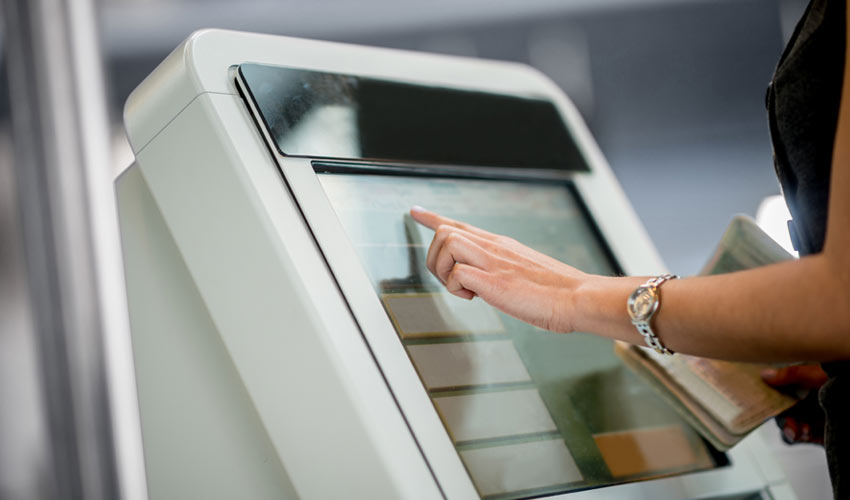In times of supply shortages and massive lockdowns, the aviation has demonstrated to play a crucial role in meeting people´s most basic needs. From the repatriation of nationals to the provision of medical equipment and essential goods – all efforts appoint to help flatten the curve of the ongoing coronavirus spread. To maintain the air bridge open, professionals highlight the importance of ensuring the continuity of operations at airports.
While airlines try to increase their capacity to transport more cargo and airports develop plans towards more flexibility, ground handlers work around the clock to keep the chain running. Key processes such as passenger transport, baggage management and the control of aircraft turnaround rely on these partners. Since the pandemic is changing the way how ground activities take place, specific measures are needed to satisfy operational and safety requirements.
How can ground handling operations be organized during COVID-19?
1. Keeping social distancing at customer services contact points
At critical stations such as check-in counters, security checkpoints and gates it is encouraged to reduce direct contact between agents and travelers whenever possible. If queuing cannot be avoided, the Transportation Security Administration (TSA) suggests ordering people in a way that 6 ft. of distance is maintained. This can be complemented with the allowance of wearing face mask – which must be shortly removed for identity verification at the security point.
It is not a secret that there are still several inefficiencies that hamper smooth passenger journeys through airports. Going one step beyond conventionality, dedicated technology can be helpful to streamline the processing times and so, restrict personal interaction. With a few taps on the phone, travelers check in and become a personalized slot in line. Most apps let even the download of a digital boarding pass, which can be easily displayed together with the passport and security details.
Other measures aimed to physical distancing include to:
- Re-configure check-in stanchions to enable broader areas.
- Use visual signs on the floor to make people in line aware of spacing rules.
- Implement automated screening checkpoint lanes where feasible.
- Plan gates optimally to avoid concentration in boarding lounges.


2. Setting cleaning plan when using ground service equipment
From lifting bags to positioning planes − ground support equipment (GSE) is critical to service aircrafts on time. Up to date there is no formal guideline urging to extraordinary sterilization policies. Then, there is still no scientific information suggesting a direct transmission of coronavirus from contaminated surfaces to people. However, as preventive measure, cleaning work may be intensified according to the context in which the GSE is being used.
Since the risk of exposure differs from case to case, it is helpful to set some priorities in the frame of a sanitation protocol. Equipment intended for passenger transportation like airport shuttles should be on the top of the list. Specifically, frequently touched surfaces like handrails and door buttons may be getting multiple wipe downs a day. What kind of disinfectant should be chosen? The Centers for Disease Control and Prevention (CDC) indicates that products containing at least 60% alcohol, peroxide or hypochlorite are suitable.
3. Ensuring optimal staging storage of GSE
To guarantee the availability of non-powered and powered vehicles, it is important to have an optimal infrastructure to store it. Such areas must provide enough space to avoid stockpiling and reduce the risk of damage. Equally relevant but sometimes overseen is ventilation. After the GSE underwent disinfection, an adequate air exchange helps to speed up the chemical’s evaporation. Without a proper ventilation system in indoor spaces, the concentration of certain substances in air increases, which could trigger some health effects.
Speaking of location, a good practice is to organize airport tugs and pallets depending on how often operators draw upon it. As rule of thumb, they should be parked without hindering the movement of the personnel assigned for their use. To prevent agglomerations, the access to GSE must be granted only to authorized staff with required training and qualifications.
What if a passenger shows symptoms of coronavirus after landing?
If a COVID-19 suspect is detected on a flight, the International Air Transport Association (IATA) prompts ground handlers to follow a special ramp services protocol:
- It must be ensured that a smooth communication between ramp agents and crew is followed.
- The number of buses assigned for unboarding should be restricted as much as possible.
- People should be distributed in small groups before being transported, in order to keep physical distancing.
- If using a boarding bridge, a limited number of travelers should circulate through it at the given time.
- Right after the disembarkation process has concluded, all the equipment used must be disinfected.
What other recommendations do you consider relevant? Let us know in the comments!





0 comments on “Managing COVID-19: Recommendations for Ground Handling (Vol. I)”